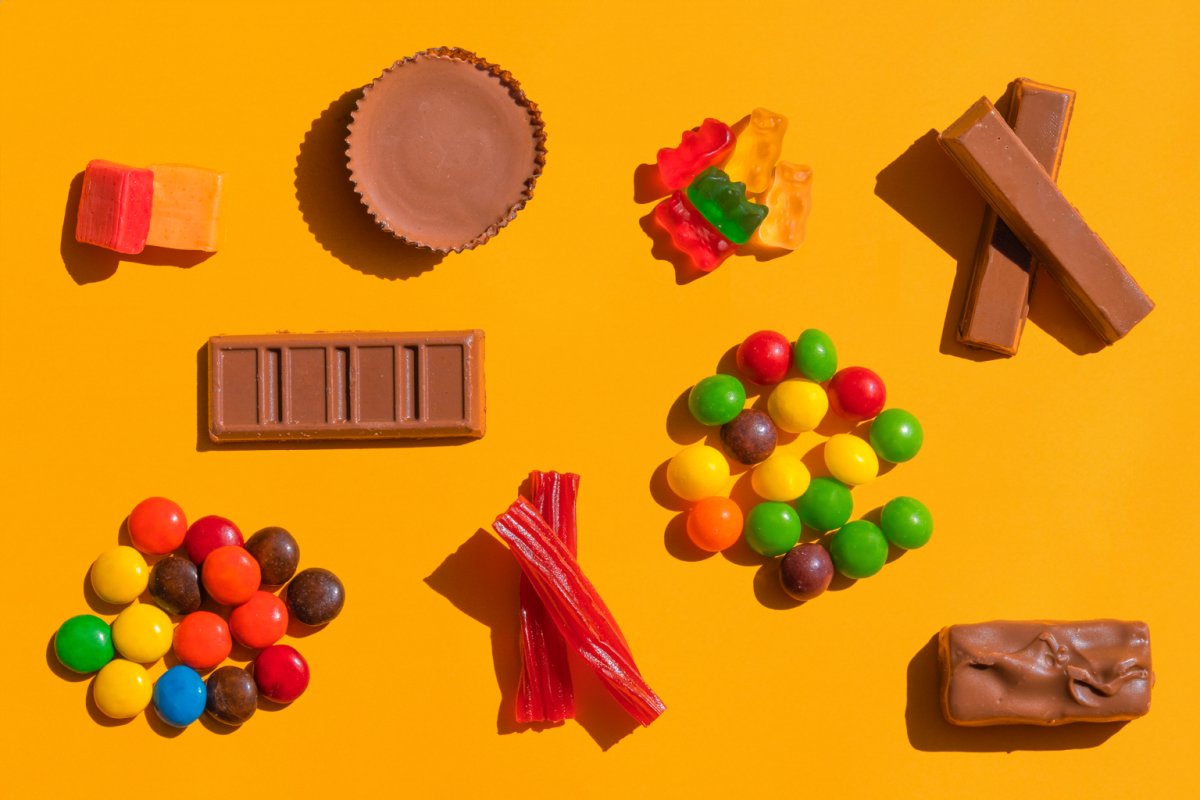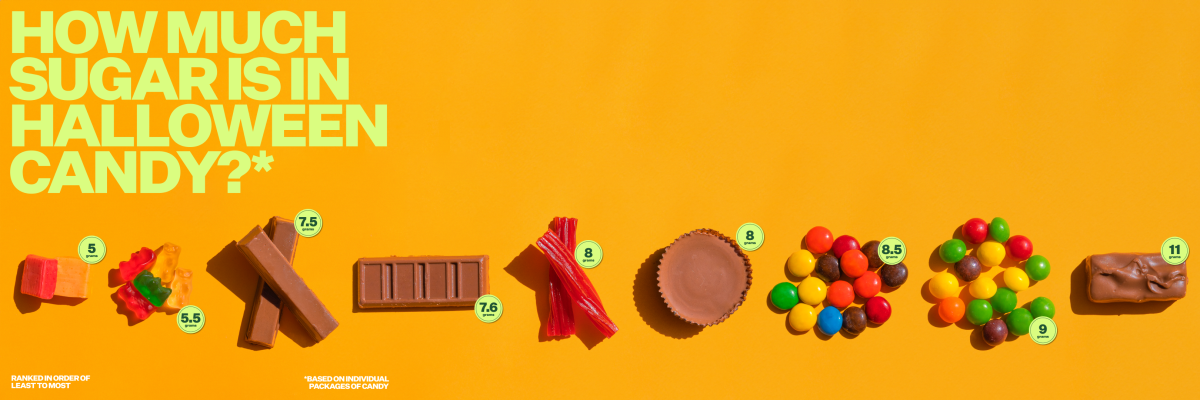Your cart is currently empty!
Is Halloween Candy the Scariest Part of October 31st?

Halloween is upon us, and by us, I mean parents who will try their best to manage sugar intake on the scariest night of the year. We’re not here to judge. We simply want to help manage Halloween candy intake. We’re talking the scoop on how to manage sugar highs, sugar lows, and the morning…

Halloween is upon us, and by us, I mean parents who will try their best to manage sugar intake on the scariest night of the year. We’re not here to judge. We simply want to help manage Halloween candy intake. We’re talking the scoop on how to manage sugar highs, sugar lows, and the morning after. What foods to eat, how much sugar is too much sugar, and if it’s possible to be healthy on Halloween at all.
A Spooky History with Sugar
Halloween night is full of ghouls and ghosts, and many other unnatural occurrences, including: candy. Candy means tons of added sugars. From birth we are hardwired to love sugar. In short science speak, sugar=calories=we won’t starve. But we don’t need added sugars to survive. In fact, the added sugars in Halloween candy aren’t necessary for our survival at all!
The preference for sweetness is believed to be an evolutionary adaptation that helped our ancestors identify and consume calorie-dense foods, ensuring they had the energy necessary for physical exertion and survival. As a result, the human brain developed a preference for sweet flavors, and this preference has been passed down through generations.
However, in modern times, the widespread availability of processed and refined sugary foods has led to excessive consumption of sugar, which can contribute to various health problems, including obesity, diabetes, and cardiovascular disease. Despite this, the innate preference for sweetness persists, often leading to cravings for sugary foods even when they are not essential for survival.
Understanding the biological basis of our preference for sugar can help individuals make informed choices. It can also help us find ways to balance the intake of sweet foods with a variety of nutritious, whole foods.
And if nothing else, it might allow you to go gentle on yourself when your kid rips into that 10th piece of candy. Try not to feel too frustrated Halloween night when your kids are going a bit coo-coo for chocolate. We’re in this together.
How Reduce the Sugar Scaries
We’re here to ask if is it possible to minimize the impact of sugary treats? The surprising answer is: Yes. If possible, it’s great to try and get the kids to eat a healthy dinner before they head out for the night’s festivities. If you know Halloween candy will be consumed post trick-or-treat, the trick is to get them to eat beforehand.
- Protein-rich foods: Including protein in the pre-trick-or-treating meal can help stabilize blood sugar levels and keep children feeling full for longer. Some options include grilled chicken, turkey, eggs, or plant-based proteins like tofu or beans.
- Fiber-rich foods: Fiber can slow down the absorption of sugar and promote a feeling of fullness. Serve foods like whole grains, fruits, vegetables, and legumes. For example, a bowl of oatmeal with fruits or a whole-grain sandwich with vegetables can be good choices.
- Healthy fats: Healthy fats can also contribute to a sense of satiety. Consider foods like avocados, nuts, seeds, or natural nut butter. These can be included in snacks or meals such as a small avocado toast or a fruit and nut trail mix.
- Complex carbohydrates: Opt for complex carbohydrates rather than simple ones. Whole grains, quinoa, and sweet potatoes can be good sources of complex carbs. Serving these with some lean protein and vegetables can create a well-balanced meal.
- Fruit and vegetable snacks: Fresh fruits and vegetables can provide vitamins, minerals, and fiber. Serve sliced apples with nut butter, carrot sticks with hummus, or a fruit salad to add some natural sweetness before the candy indulgence.
Having troubling Halloween night getting the kids to listen? Here are some Parenting Tools that might help.
Know Your Halloween Candy Stats
Not all candy is created equal. We won’t go so far as to say there are good candies and bad candies, but it doesn’t hurt to know just how much sugar is in one serving of your kiddos favorite Halloween candy. According to a 2013 study, On Halloween, the average child consumes about three cups of sugar, which is about 144 teaspoons of sugar. We’re talking added sugar here, something that our bodies do not need to survive.

And if all fails try to remember, it’s one night. There’s always tomorrow. Pack them a YUMI Bar in their lunch and don’t lose sleep over their great candy-capades.







